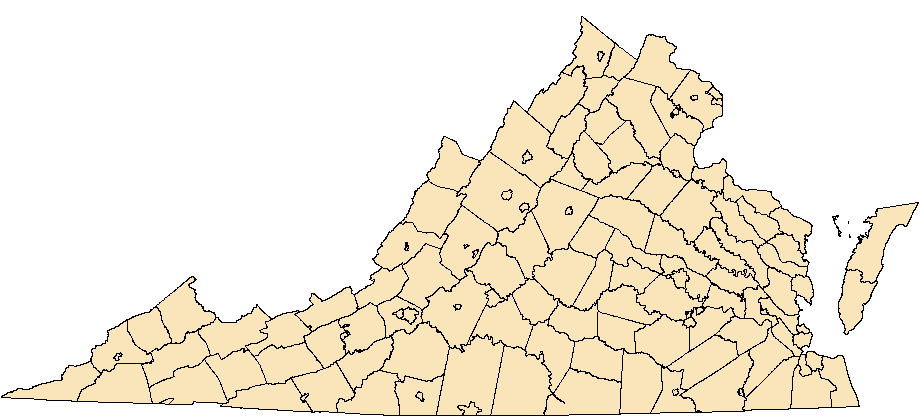Hadena ectypa (Morrison, 1875)
A noctuid moth
NatureServe Global Rank: G3G4
Virginia State Rank: S2
VA DGIF Tier: IV
Federal Legal Status: None
Virginia Legal Status: None
Description: This noctuid moth is a medium-sized (24 - 34 mm) dark moth, easily recognized by its pale, wavy subterminal line that contrasts with its general coloration. The orbicular and reniform spots are surrounded or partially surrounded by this same pale shade. The base coloration is gray with darker gray or black markings. The hind wing is brownish gray with lighter fringes.
Similar species: Disparaged Arches Moth (Orthodes detracta) is similar, but does not have the distinguishing pale, wavy subterminal line. Other Hadena species can be similar as well, but have more distinct markings as opposed to the smudged look of Hadena ectypa.
North American Range: This species ranges in western Massachusetts and southeastern New York, westward to Minnesota and Iowa, and southward to the mountains of North Carolina, Tennessee, and Georgia; most commonly found in southern Ohio and the mountains of Virginia. In Virginia, it has been documented in the city of Arlington, and Warren, Bath, and Bedford counties.
VA Observations by Locality: Arlington | Bath | Bedford | Warren





Flight season and broods: Adults were found flying in Virginia from 28 July to 20 August. This is a partially double brooded species.
Habitat and Food Plants: The habitat occurs in close association with the food plant in somewhat open woodlands and forests, including ridge-top habitats at 1,300 m elevation at the recent collection sites in Virginia. It lives in small openings in second growth woodlands, often near riparian areas in Ohio (Troubridge & Crabo, 2002). The food plant consists of woodland wildflowers in the pink family (Caryophyllaceae) such as Silene stellata and Silene vulgaris.
Behavior and Ecology: Larvae feed on flowers and seed capsules of plants and most of the year is spent as pupae in the soil. Larvae mature from July to September.
Population trend and potential threats: This is a very rare moth, threatened by loss of habitat to increasing deer populations that eat the flowers of the food plant, development, and non-native plants.
Management practices: Because the food plant sometimes grows along roads in wooded areas, mowing in July or August should be avoided.
References: Moth Photographers Group at the Mississippi Entomological Museum at Mississippi State University. Web application at: http://mothphotographersgroup.msstate.edu/large_map.php?hodges=10316 Accessed: 14Apr2013
Schweitzer, D. F., M. C. Minno, and D. L. Wagner. 2011. Rare, Declining and Poorly Known Butterflies and Moths (Lepidoptera) of Forests and Woodlands in the Eastern United States. USDA Forest Service, Morgantown, WV, FHTET-2011-01. 517 pp.
Troubridge, J. T. & L. G. Crabo. 2002. A review of the Nearctic species of Hadena Schrank, 1802 (Lepidoptera: Noctuidae) with descriptions of six new species. Fabreries 27(2): 109-154.
Virginia Department of Conservation and Recreation, Natural Heritage Program, 600 E. Main St., 24th Floor, Richmond, VA 23219
This atlas was compiled
by the VA Natural Heritage Program with funds provided by the VA Dept. of Game and Inland Fisheries through a state wildlife grant
from U.S. Fish and Wildlife Service
Questions/Comments? Check the contacts page |
Internet Privacy Policy Statement
Last Modified: Friday, 26 February 2021, 03:21:56 PM